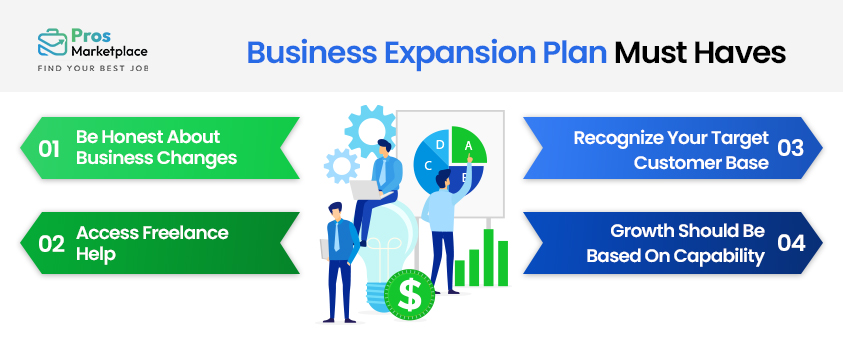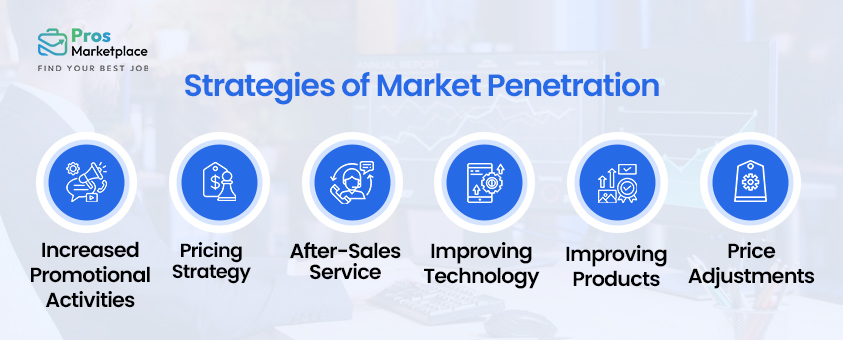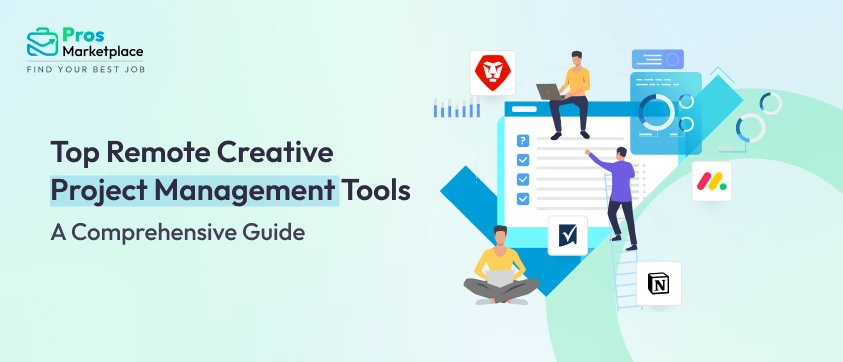Have you ever desired to take your small business from good to great? That’s the perfect motivation to begin expanding your business.
Business expansion is about reaching new heights. This means attracting new customers, sales, or launching products and services.
However, just like any business process, it requires proper planning and a solid strategy for successful business expansion.
If you are a business owner planning to expand your business, a business expansion plan should be your first step. However, we understand this can be tricky, so go through this blog to learn more about it.
What is a Business Expansion Plan?
A business plan is important for organizations looking to sustain business growth. It shows how to carefully make strategic moves to achieve a wide range of goals. These goals might include business expansion, geographic distribution, or the creation of new products/services.
Without a plan, expanding your business can be like driving without a map. You are likely to get lost without knowing the next steps! A good plan helps you avoid problems and reach your business goals. This is especially important for stores that want to open new locations.
What to Include and How to Write Your Business Expansion Plan?

A detailed business plan is a tool that helps businesses execute strategic moves to attain various objectives. These objectives could be business expansion, distribution to other areas, or the creation of new products/services.
So always start with a market analysis to get comprehensive knowledge about the customers’ requirements, competitive positions, and existing market share.
Likewise, financial plans correctly predict the expenses, revenues, and investments needed to attain the desired financial results. Here are the key components you should cover in your business expansion strategy:
Executive Summary
An executive summary is a concise statement. It provides a rundown of your expansion plan and vision. Provide as much detail as necessary for someone. Read the summary to understand the overall business expansion strategy.
It should briefly highlight crucial areas like:
- Business growth targets
- Projected and current operating costs
- Funding needs
- Marketing approach
Your Product/Services & Team
Discuss what makes your business unique. Use this space to communicate its value propositions. List the full line of products and services. Identify any key players and stakeholders for expansion. You can also include a company controller/accountant who holds value. You can highlight:
- What do you provide for your customers that other companies don’t?
- In what areas do you shine?
Plan of Expansion
Now that you’ve laid the groundwork, this is where you detail your business expansion plan. Describe your goal and what you need to achieve your vision. Think in terms of planning, executing, and maturing your expansion. Identify what or where you intend to expand:
- Are you releasing a new product?
- Do you plan to open a new branch?
- Does your expansion involve additional staffing needs?
Make sure to address the following points
- How you intend to support your expansion
- Whether you’ll need additional staff, capital, or resources for your plan
- Details about your new product or service, if applicable
- Business goals and key performance indicators (KPIs)
- New regulations or legislation, if applicable
Marketing Analysis
Identify and analyze your competitors in your new area of expansion.
Consider what makes your competitors successful. Like advertising strategies, prices, and industry outlook to reach new niches or audiences.
Marketing Strategy
Outline the steps you will take to achieve the goals you set.
Review your services products, advertising plans, key customers, and where/how you plan to sell them. Even if you don’t have a complete idea, you can join the industry you want to use in your idea.
Financial History, Analysis and Forecasts
Present financial documents to confirm the workability of your plan. Like, sales reports, balance sheets, profit and loss statements, and future forecasts.
If you are a newbie in business accounting or bookkeeping, employ a professional who can teach you this part of your plan. Visual aids such as charts and tables are great for explaining complicated data instead of words.
How to Make a Business Expansion Plan?

Every new or growing company needs a business plan. It’s like a map to help you make decisions, find investors, and achieve long-term success. A good business expansion is clear, creative, and flexible in today’s competitive world.
You will also need to research the market, identify your competitors, and determine the challenges you will face. Read below to find out the essentials of a successful plan. Let us start exploring the steps to creating a plan that works for you and your business.
Conduct thorough research
The initial phase of expanding your business involves conducting thorough research. Illustrating the current state of your business and the future path is essential for comprehending your business growth. This helps you analyze your business plan, determine its strengths and weaknesses, and compare the competition. The key aspects to consider are the market study, the user’s analysis, and their preferences and behaviors.
Set Clear Objectives and Goals
After you have gathered enough information, you should set your objectives and goals. First, set huge goals for the business expansion plan. For example, boost revenue, go to new markets, or make your brand known.
After that, make these goals SMART which means, specific, measurable, achievable, relevant, and time-bound.
This will make your goals well-defined and achievable. To illustrate, if you are in the process of entering a new region, establish targets for conducting market analysis, gathering the competitor data, and the partnerships that you are going to make within a fixed time.
Bonus Tip
A SWOT analysis, which you do to review your strengths, weaknesses, opportunities, and threats, is important. Besides, the study of your competitors’ blueprints is also an essential part of gaining an advantage. You can have a freelance expert to support you in this research.
Analyze Your Expansion Goals
Market analysis provides an in-depth understanding of customer needs, competitive positions, and current market conditions. Financial planning carefully estimates the expenses, revenues, and investments needed to achieve financial results through your business expansion strategy.
Proactive risk analysis identifies and mitigates challenges that may hinder the success of the expansion. It aligns with the company’s long-term vision and supports change in a dynamic business environment.

Customer data and feedback can help you understand the desires and purchasing behaviors of the customers.
This, coupled with a competitive analysis identifying competitor weaknesses, empowers you to develop targeted strategies. These strategies might involve product enhancements, strategic pricing adjustments, or focused marketing efforts. Upselling and cross-selling tactics, supported by well-trained sales teams can contribute to future business growth strategies.
Finally, using social media, email marketing, and promotions allows you to amplify brand visibility, attract new customers, and retain your existing loyal fanbase. Through this comprehensive approach, you’ll solidify your position within your established market and cultivate a thriving customer base.
Market Development
A business expansion strategy starts with thorough market research. This helps to outline the demographics, psychographics, and buying behaviors of the target audience. Identify any cultural currents or legal regulations that might impact your voyage.
Customize your services as per the target market’s preferences. Think about language adjustments, packaging tweaks, and feature modifications. Craft a localized marketing strategy. Connect with your target audience using local media, influencers, and community events. Partner with local distributors or retailers to ensure smooth product or service delivery.
Finally, keep your finger on the market pulse by monitoring feedback and performance metrics. This continuous adaptation ensures your market development efforts stay on course for success!
Product Development
Market research is the first step in product development. So look at trends, see what your customers want these days, and figure out the problems that need your attention. Talk to your fans, run surveys, and use data to see what makes them tick.
Next, get your R&D team together and brainstorm awesome ideas to fix those problems and give your customers what they crave! Build some prototypes – like first drafts of your new product – and test them to make sure they’re awesome and work perfectly.
Once you’ve got the perfect product, launch it with a marketing campaign to get everyone excited (think cool ads and special offers!). But remember, the fun doesn’t stop there! Keep listening to your customers and what’s happening in the market, and keep making your products even better. This way, you’ll stay ahead of the competition and keep your customers liking your product.
Diversification
Consider your business’s strengths and risk tolerance to choose the perfect diversification path. Expand into related markets using existing expertise, or go vertically by integrating upstream or downstream activities within your industry.
Diversification lets you enter entirely new markets, maximizing business growth potential while spreading risk.
Carefully weigh the pros and cons of each option, considering factors like market demand, competition, and resource needs. A detailed diversification plan outlining goals, timelines, and performance metrics is key for the successful implementation of business expansion strategy and ongoing adaptation. By staying flexible and responsive to market changes, you’ll ensure your small business thrives in the long run.
Conclusion
Creating a business expansion plan is more like the map of success. So, it is essential to do a detailed evaluation. This will give you clear goals, and help you come up with a perfect plan.
By following the steps outlined in this post, you will gain the knowledge to develop your own business plan
The key is to put in the work towards achieving your aim goal and continue to grow. A good expansion plan will not only help you seize new markets but also attract new customers, ensuring long-term success for your business.
Also Read: How to Hire the Right Employees?







